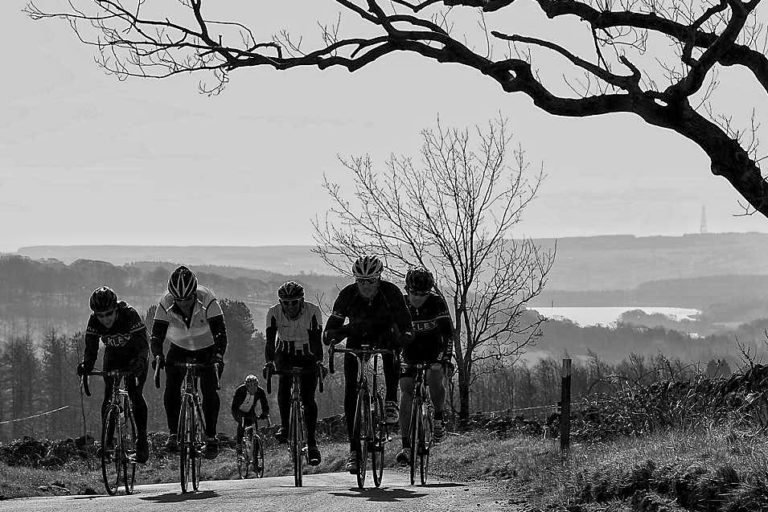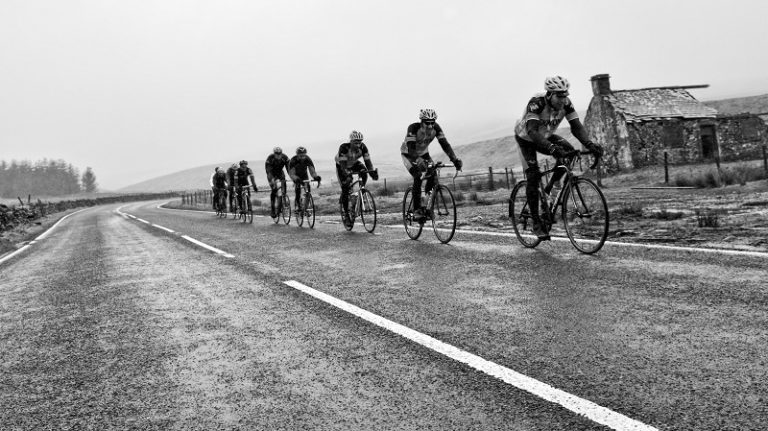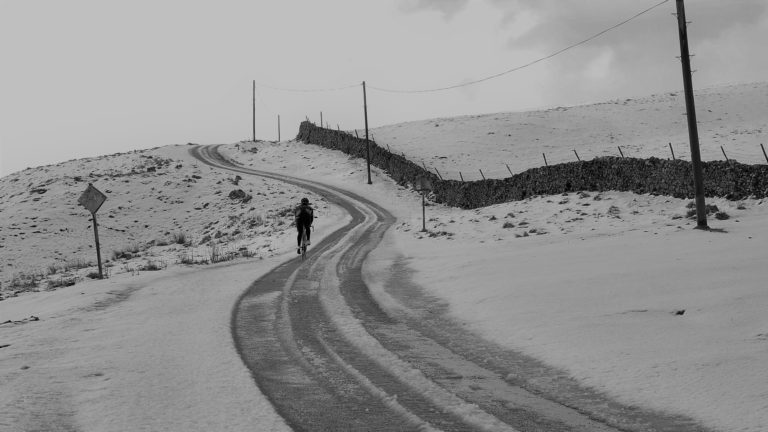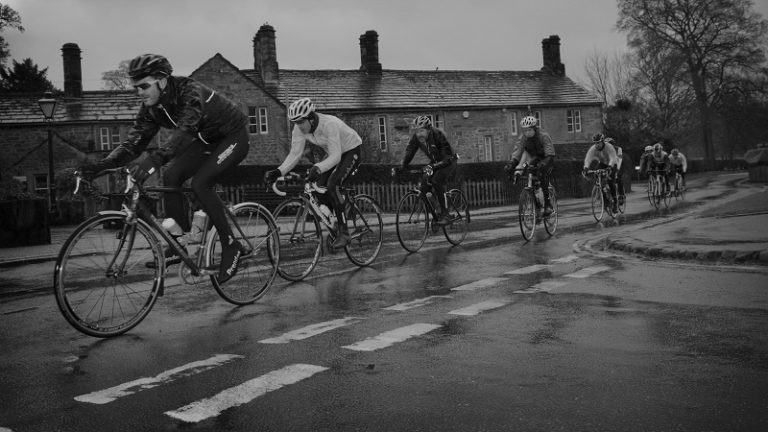How it used to be
Traditionally, the cyclists winter training has been simple to describe. Long weekend club rides with a cafe stop, and gym and circuit training mid week. With a few turbo training sessions for intensity – though many frown on anything too intensive during winter. You can find the reasoning for this regime in numerous books and articles, but I’m about to propose something radical – that this old reasoning was a response to constraints that are no longer with us.

New winter dawns
Modern textiles offer a range of clothing options which give us significantly better protection from the winter climate than the wool and cotton of the past. We can stay warm and dry, with toastie toes and fingers. We can be much more visible in poor light and current lighting technology gives us an almost daylight view of the road ahead. In effect we can actually train the same way in winter as we do in summer. I know it would be dark and cold, but I’m not convinced that that is a reason not to do it. It just means you need to have a little more commitment, and that might be a good thing.
Shine a light
I know plenty of riders who are getting decent miles in on dark winter mornings and evenings, doing big rides, and even hill reps outside rather than on a smart trainer. There are some risks, primarily scarcity risk – drivers may not expect a cyclist on a dark winter rural road and may drive accordingly. In my own experience a drivers perception of a riders vulnerability makes night riding as safe as any other time. What about ‘base’ training I hear you say? Well what about it…
Traditionally, base training involved long miles twiddling easy gears. Whilst it may serve a purpose, doing a couple of long rides at the weekend isn’t base training and could lead to you losing hard-won fitness. Unless you’re able to do 12+ hours a week at a low intensity you’ll not be making gains from it. Better to use a combination of intervals and tempo rides outdoors to increase your fitness year round, than lose fitness. We’re not all world tour riders, we don’t all need the capacity for 6 hour rides so take a common sense approach and have phases of intensity and recovery.

Break it down
In simple terms your performance on a bike is a combination of aerobic capacity (how big your engine is), the percentage of that capacity that you can sustain (your threshold) and how efficient you are at transferring that to the drivetrain. All of these can be developed by shorter training sessions with a couple of longer rides. Even training for more extreme endurance events can be done by the right combination of shorter rides – the exception is the mental aspect of hours of sleep deprived riding. Though you could get up at 3am and do a turbo session 🙂
Summer in winter
So, in summary so far, thanks to modern clothing and lighting, winter training can be be just the same as summer training. Same miles, same efforts, same fun time on two wheels.
However, there is another aspect to consider through. You might have some physical issues that winter could be a great time to deal with. Back ache, recurrent injuries, boredom with the bike and so on.

Chassis tweaks
I would describe this as taking time to enhance the chassis and engine management system. Get a fresh mind by doing something different, whether mountain walking, swimming, trail running or even time on a climbing wall. Use resistance training and stretching to eliminate back ache that plagues summer rides, gain strength in the gym to help on steep climbs, stretch upper back or shoulders to enable more aero riding positions and so on.
My personal mission this winter is to deal with a right-left leg strength imbalance, eliminate back ache on long hilly rides and get a fresh mind for riding after averaging 9000 miles a year for three years with no down time.
But if you still love the bike and have nothing physically wonky to put right, take comfort from the fact that winter training can be just the same as summer training – minus the warm rain and post-ride Pims!

Winter riding tips:
- Choose routes that take you close to home a few times in case you have to bail out. Figure of eight or clover shaped routes. You don’t want to be 40 miles away on an out and back route fixing a chain with bare hands in a blizzard. I know this to be true.
- On frosty days, choose east-west direction to start rides then switch to north-south , this takes advantage of sun getting to any ice before you do.
- Take a spare base layer to change into at cafe stops and fresh cap.
- Avoid hammering up big climbs to prevent sweat leading to wind chill on descents.
- Take calorie-dense food that makes you happy – scotch eggs, pasties, hot chocolate in an insulated bottle.
- Plastic disposable ‘diesel gloves’ from a petrol station can give emergency finger warmth!
Dave Smith
Web: www.velocityandvitality.com
Twitter: @ffflow

‘Keeping toes toastie’ – whats your secret? I’ve tried just about everything.
Hi David, Sealskinz socks or thermal ski socks are pretty warm with some decent overshoes. It gets harder to block out the cold when its well below zero though!
Good common sense article, thanks.